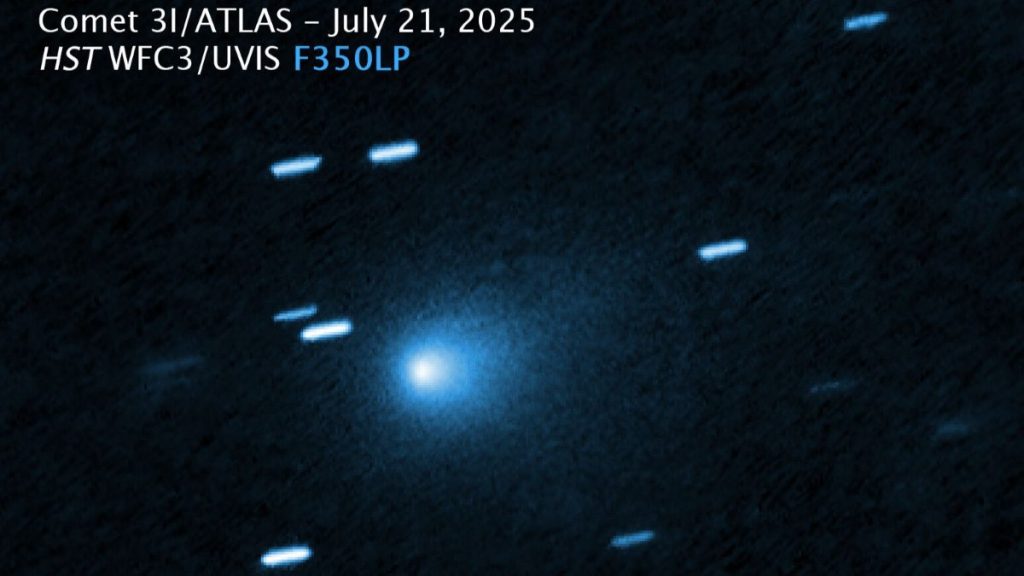Astronomers around the world are observing a rare visitor from outside the solar system.
Others are reading now
The interstellar comet 3I/ATLAS, which entered the inner solar system in 2024, has drawn international attention as it passes near the Sun.
Researchers are using the opportunity to gather precise measurements that could improve understanding of how objects from other star systems behave when they encounter the Sun’s gravity and radiation.
New data from perihelion
A report from NASA’s Jet Propulsion Laboratory has provided the first measurements of 3I/ATLAS during its closest approach to the Sun.
The data, analysed by navigation engineer Davide Farnocchia, shows that the comet moved slightly differently from what would be expected based only on gravity.
The measurements were made when the comet was 1.36 astronomical units from the Sun, a distance of about 203 million kilometres.
Also read
The analysis found a small acceleration within the orbital plane, including a radial component away from the Sun and a transverse component along its orbit.
Possible natural explanations
Scientists suggest that the difference could be caused by the release of gas from the comet’s surface as it warms.
The reaction force from this outflow, sometimes called the rocket effect, may slightly change its speed and direction.
Based on the new data, the comet could lose roughly a tenth of its mass over the coming months as it releases gas and dust.
ESA’s Juice spacecraft is expected to make the first follow-up observations in early November.
Also read
Later, in December, the comet will reach its closest point to Earth at a distance of about 269 million kilometres, when observatories including Hubble and the James Webb Space Telescope will collect more information about its composition and motion.
Unusual optical characteristics
Astronomers have also recorded changes in the comet’s brightness and colour as it neared the Sun.
Measurements from several spacecraft, including STEREO, SOHO and GOES-19, showed that its brightness increased more rapidly than predicted.
Some instruments also detected a blue hue, which is unusual for a comet that should normally appear redder due to reflected sunlight.
The colour may result from ionised gases such as carbon monoxide, though researchers have not ruled out other natural processes.
Also read
Astrophysicist Avi Loeb noted that the deviation and optical features might have other causes, but stressed that all interpretations should remain grounded in data.
He compared the need for caution to the broader challenges in cosmology, where unexplained measurements should be examined rather than dismissed.
Sources: Medium (Avi Loeb), NASA Jet Propulsion Laboratory, Harvard-Smithsonian Center for Astrophysics, Galileo Project, ESA


